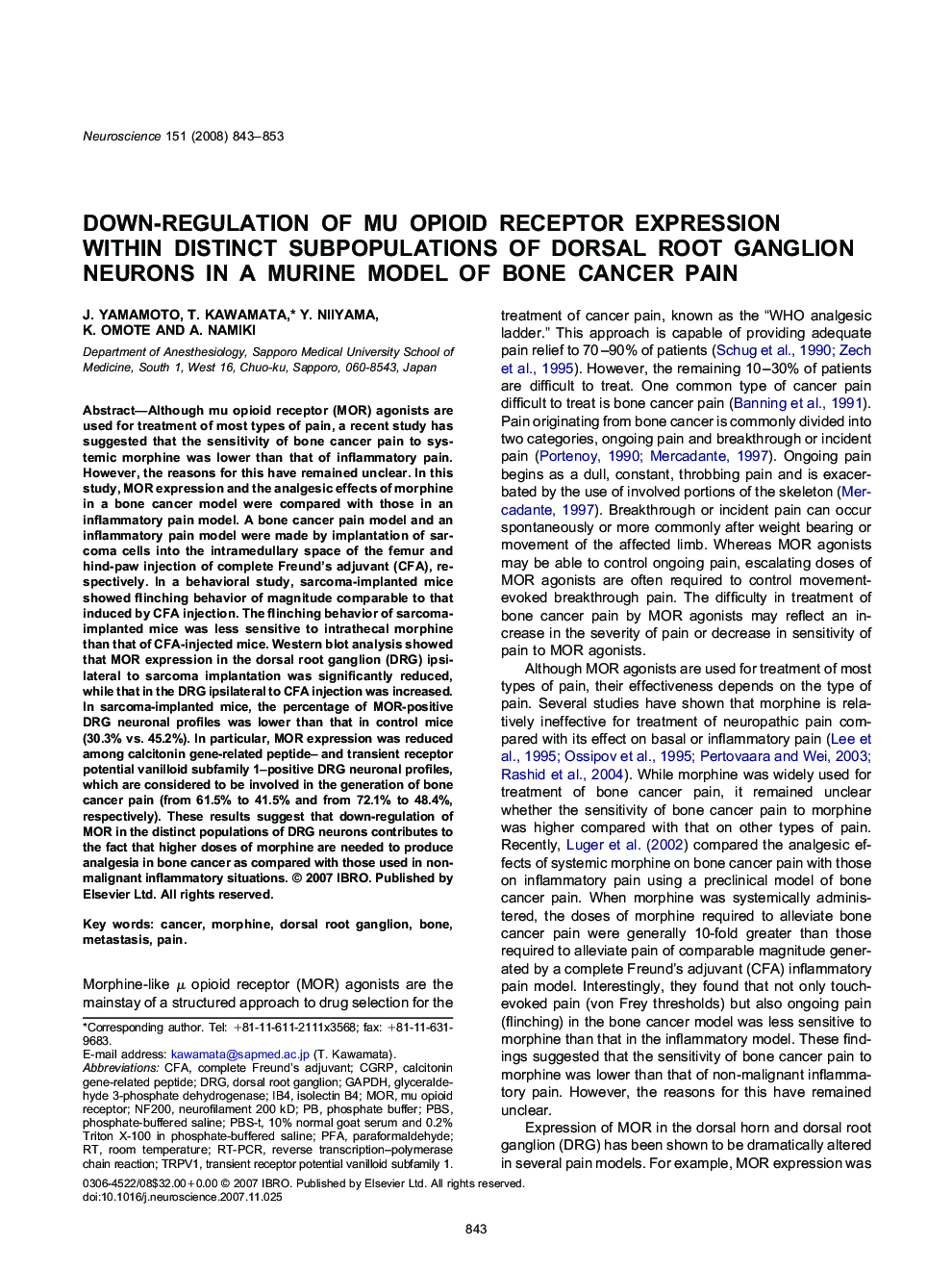| کد مقاله | کد نشریه | سال انتشار | مقاله انگلیسی | نسخه تمام متن |
|---|---|---|---|---|
| 4340848 | 1295811 | 2008 | 11 صفحه PDF | دانلود رایگان |

Although mu opioid receptor (MOR) agonists are used for treatment of most types of pain, a recent study has suggested that the sensitivity of bone cancer pain to systemic morphine was lower than that of inflammatory pain. However, the reasons for this have remained unclear. In this study, MOR expression and the analgesic effects of morphine in a bone cancer model were compared with those in an inflammatory pain model. A bone cancer pain model and an inflammatory pain model were made by implantation of sarcoma cells into the intramedullary space of the femur and hind-paw injection of complete Freund's adjuvant (CFA), respectively. In a behavioral study, sarcoma-implanted mice showed flinching behavior of magnitude comparable to that induced by CFA injection. The flinching behavior of sarcoma-implanted mice was less sensitive to intrathecal morphine than that of CFA-injected mice. Western blot analysis showed that MOR expression in the dorsal root ganglion (DRG) ipsilateral to sarcoma implantation was significantly reduced, while that in the DRG ipsilateral to CFA injection was increased. In sarcoma-implanted mice, the percentage of MOR-positive DRG neuronal profiles was lower than that in control mice (30.3% vs. 45.2%). In particular, MOR expression was reduced among calcitonin gene-related peptide– and transient receptor potential vanilloid subfamily 1–positive DRG neuronal profiles, which are considered to be involved in the generation of bone cancer pain (from 61.5% to 41.5% and from 72.1% to 48.4%, respectively). These results suggest that down-regulation of MOR in the distinct populations of DRG neurons contributes to the fact that higher doses of morphine are needed to produce analgesia in bone cancer as compared with those used in non-malignant inflammatory situations.
Journal: Neuroscience - Volume 151, Issue 3, 6 February 2008, Pages 843–853